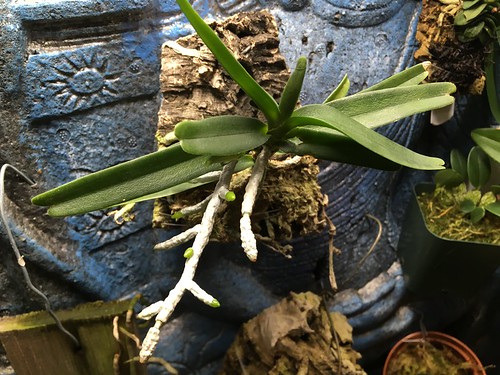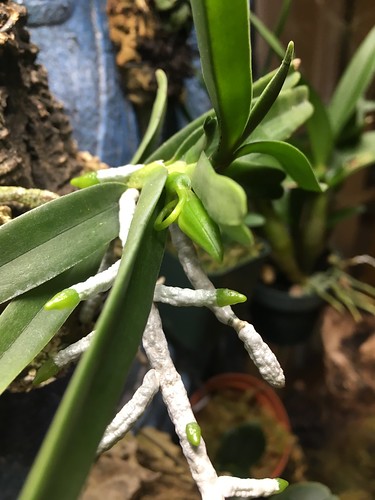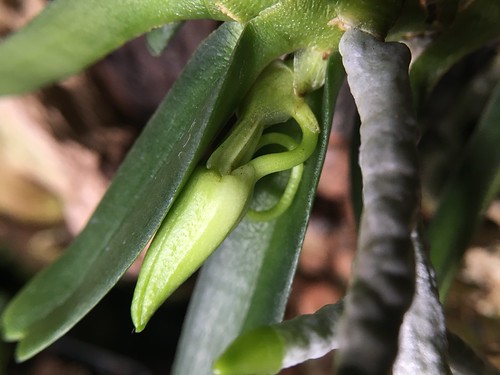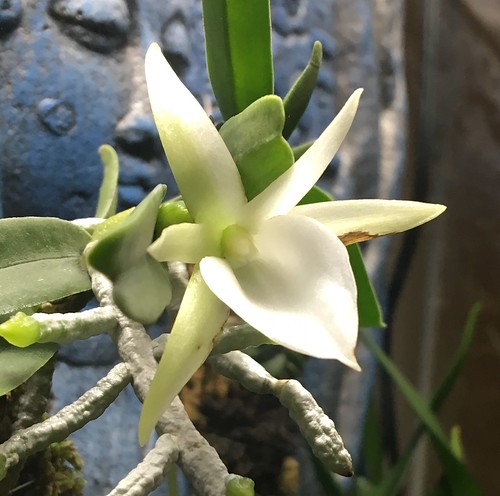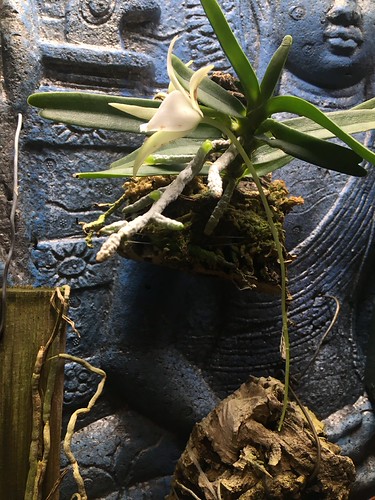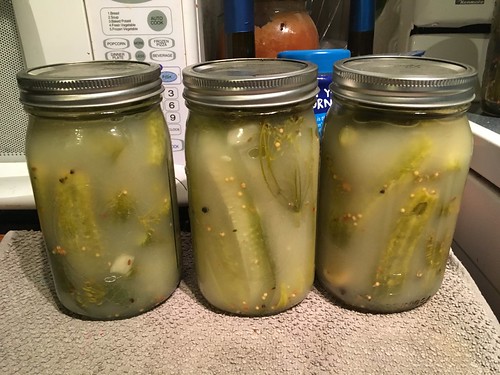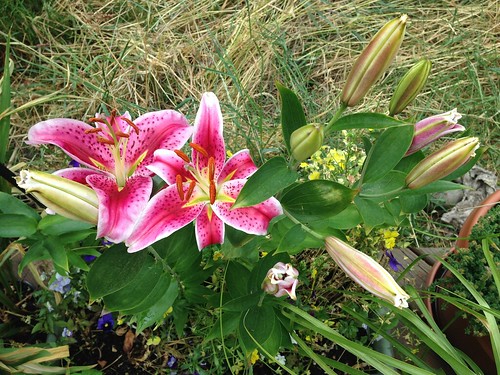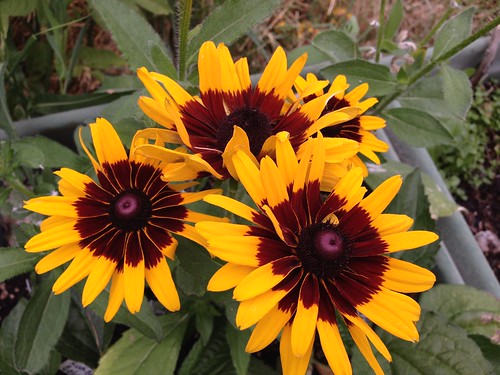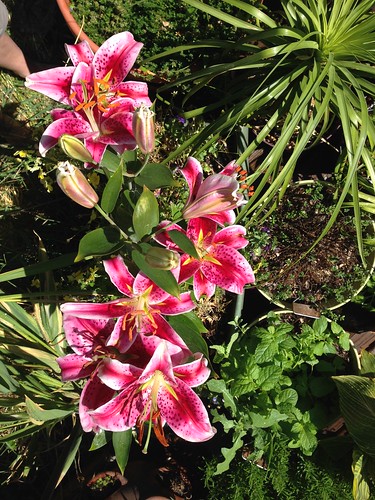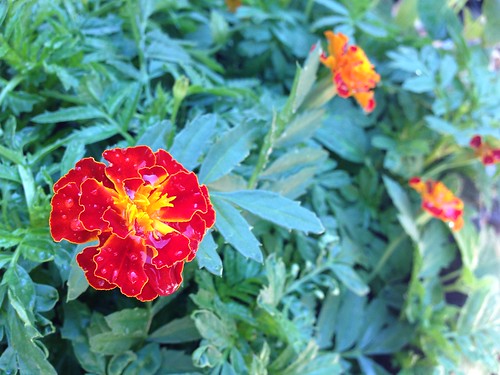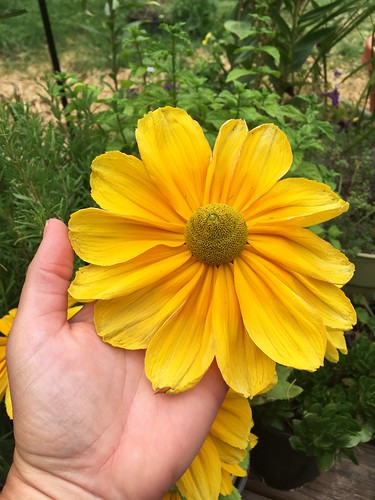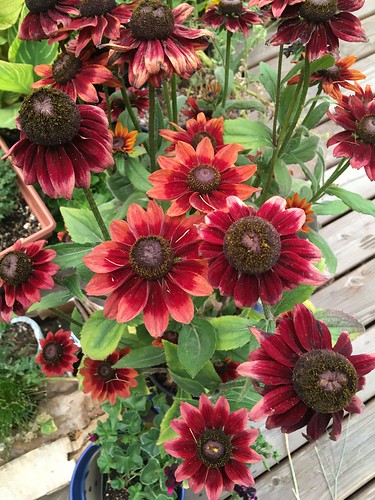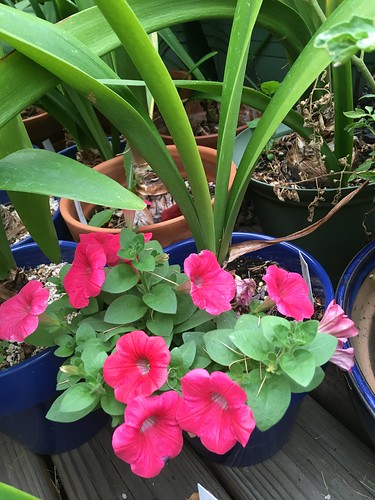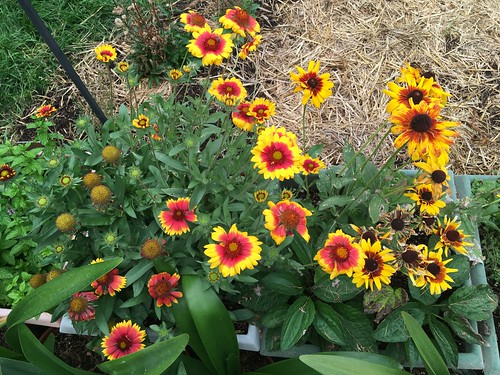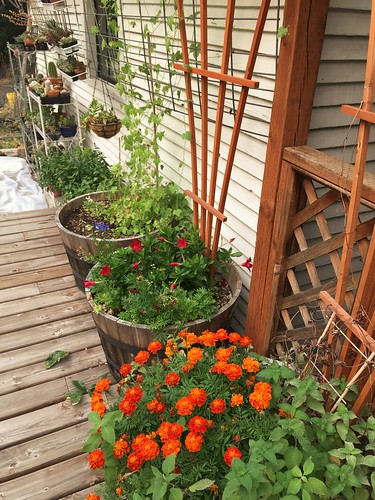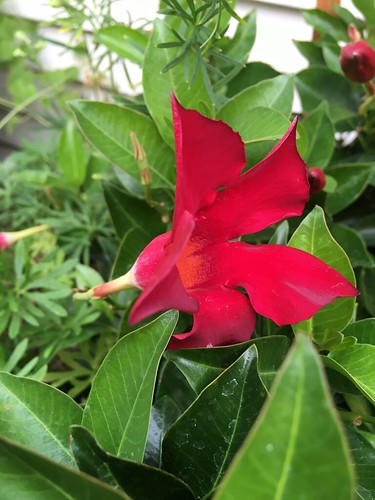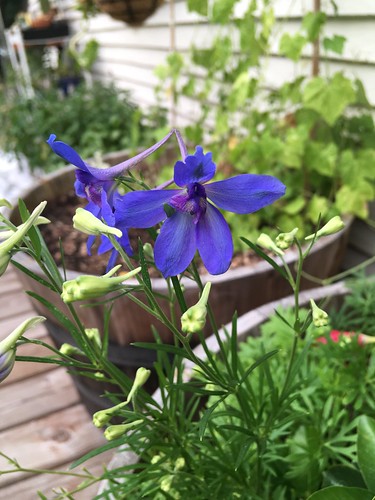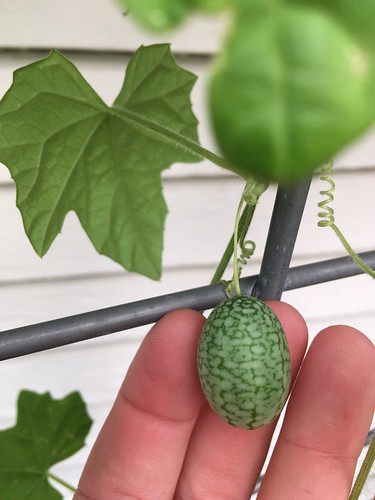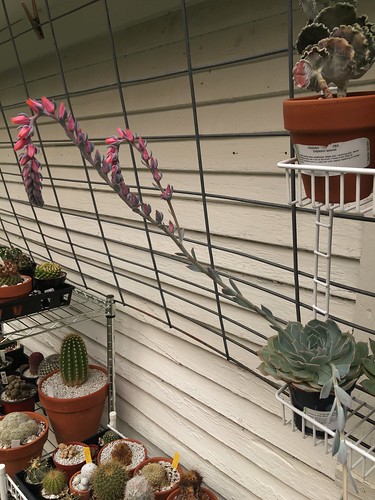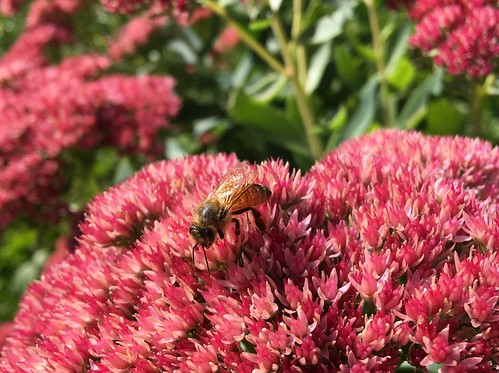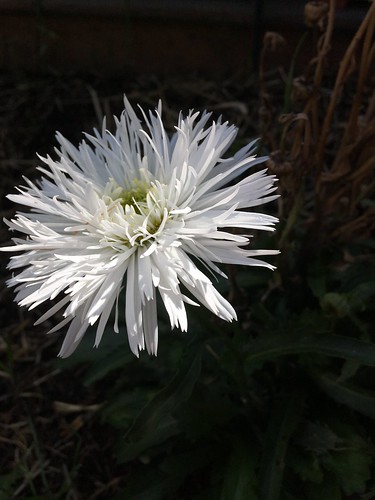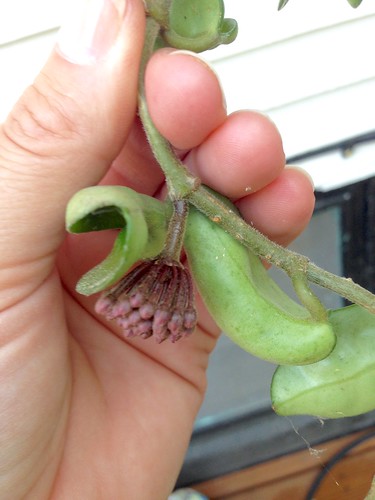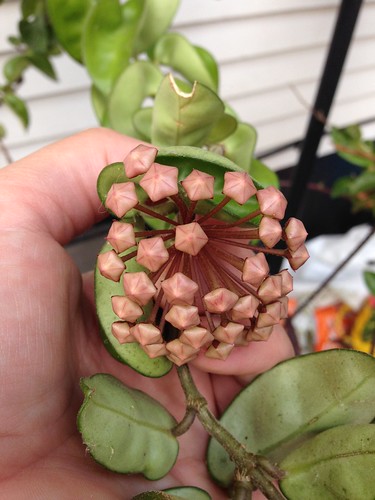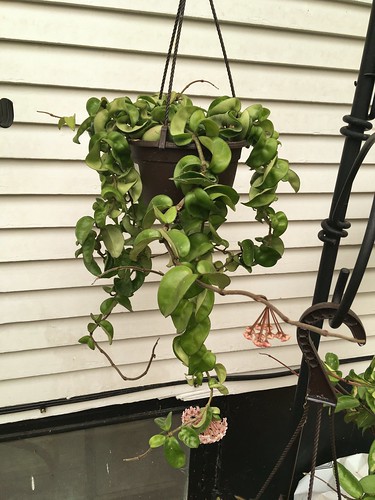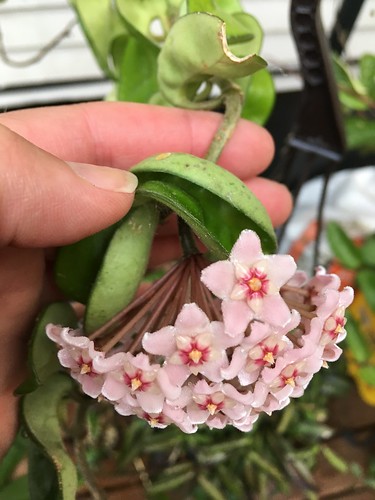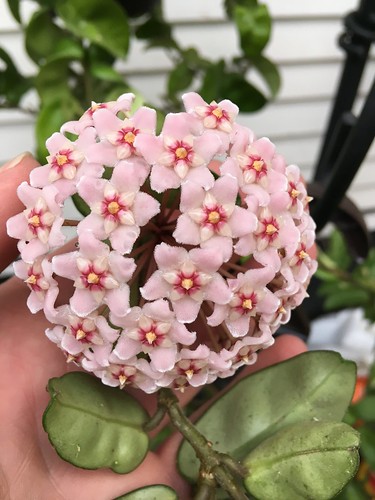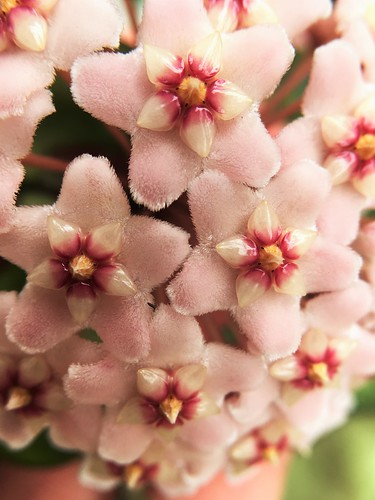I wasn't going to go, since the Columbia Gorge Fiber Festival (CGFF) happens next month and you would think that one huge fiber festival a year would be enough (hahahaha!). But as it happened, Wanda and Ed Jenkins of Turkish spindle fame (Kuchulu!) made an announcement about their product line in the week prior to the festival that made it imperative that I attend OFFF. They do not vend at CGFF, you see.
There are going to be a lot of pictures in this post.
Here's all of what I got:

A bunch of pretty fiber, a skein of yarn, a really cool sheepy tote bag, and... yeah, some spindles. You see, Ed Jenkins has added a new size to their line of spindles.
This... this was the reason I went to the festival.
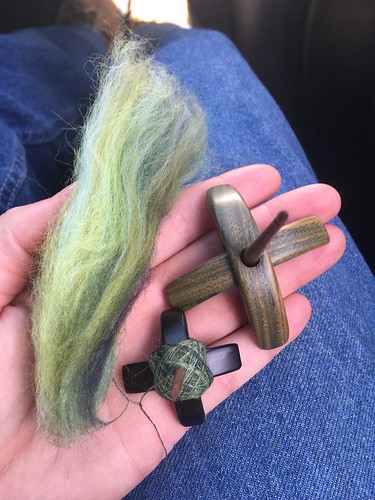
The bigger spindle is my 11 gram verawood Kuchulu. Up until this weekend, the Kuchulu model was so tiny, so small. It has now been eclipsed.
The new tiny one is named the Bee Hummingbird after the world's smallest bird. My spindle has ebony arms and a walnut shaft. It weighs 3 grams.
THREE GRAMS! It's so incredibly tiny and cute.
They have only made a small number of these spindles so far- as you can imagine, they are quite technically difficult to make. They are small and fragile and hard to hold onto during the fabrication, especially sanding. Rather than having a giant stampede at the beginning of the festival, as rabid spinners from all over the Pacific Northwest descended on their booth in a ravening horde, they decided to hold drawings throughout the weekend to choose who could buy one. Two names every hour, so we just had to take our chance with everyone else. It was frustrating not to be able to just walk up and buy one, but I guess I see their point.
Luckily, on the fifth drawing of the day, we were at their booth and Ed let Emma be the name draw-er. Amazingly, she drew her own name! I swear she wasn't looking and it wasn't rigged!
Happy happy joy! We have a Bee Hummingbird! So even though theoretically it was in her name... I paid for it, and I'm the one who likes to spin fine, and so I'm claiming it. If she wants to use it she can learn to spin fine.
Since there was no guarantee that one of our names would be drawn, I was also forced to buy another Kuchulu when we were first there. Oh, and also a Spindlewood spindle since they were also at the festival. It's not my fault, they're just so pretty.

These are a 25.5 gram amboyna burl Square Midi by Spindlewood, a 10 gram lilac Kuchulu by Jenkins, and a 3 gram ebony Bee Hummingbird by Jenkins. The wood on the Kuchulu has actual purple streaks in it. Drooooool.

Of course I had to start spinning on the Bee right away. I pulled off a tuft of the merino braid I got at the festival and started spinning in the car on the way back to Anne's house (Anne was driving). I had finished about one gram by that evening.
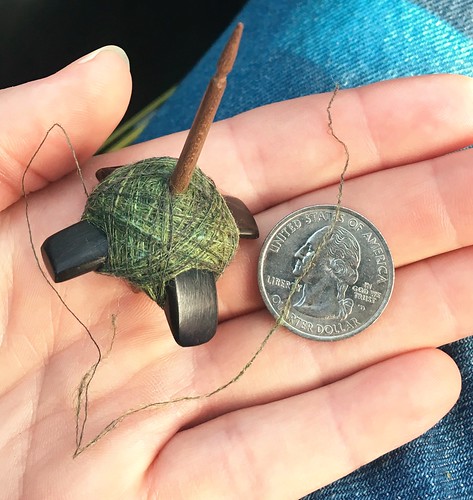
This spindle spins FINE. I let the end of the singles ply back on itself to see what I was getting, and the piece trailing over the quarter is that 2-ply yarn. Tiny singles. Cobweb 2-ply.
After I got home, I spun another gram onto the spindle. More than about 2 grams would, I think, make this spindle too heavy to spin a microscopically fine singles. Here's the Bee with 2 grams of fiber.
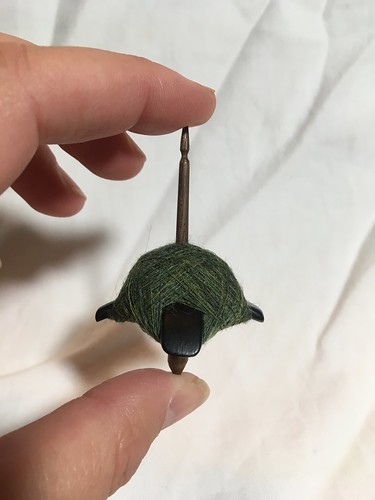
top view
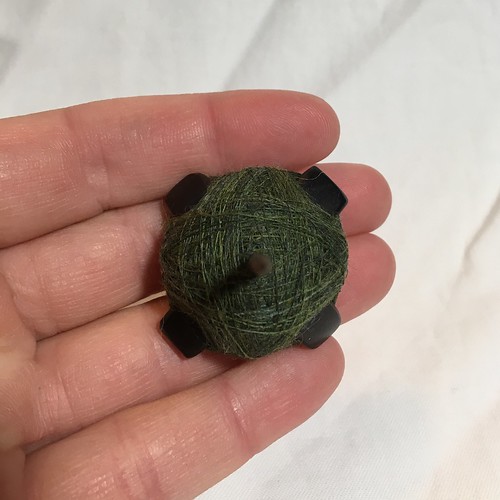
bottom view
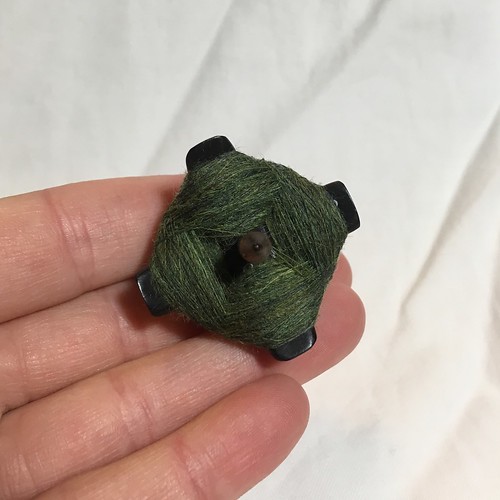
I just can't stand how cute and perfect this spindle is.
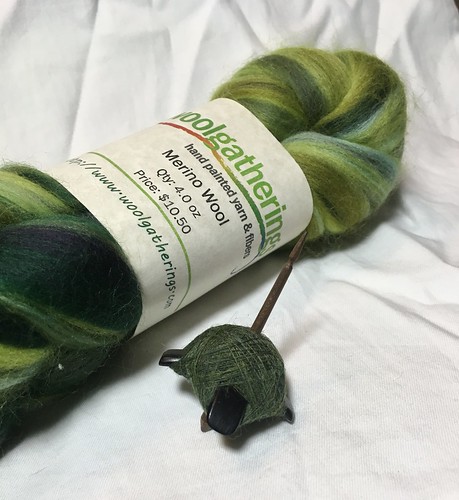
Over the next couple days I spun another 2 grams of fiber into two more turtles.

I finished the singles on Thursday night, and couldn't wait to start plying. I first wound the paired singles into a plying ball (the core was a convenient cat toy I found next to my chair). I was nervous about the turtles tangling, collapsing, or going out of control while winding, but I unwound them from the outside and it went very well. Winding the ball took an hour.
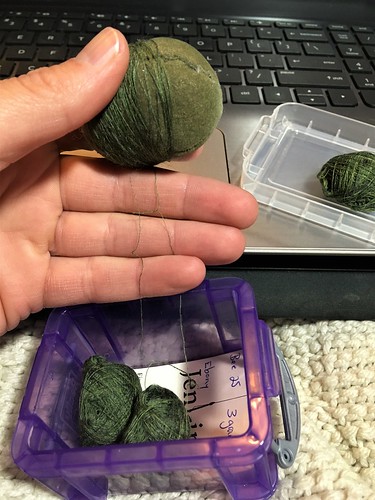
I should have stopped there since it was getting late and I had to go to work the next day. But I couldn't wait to start plying on the new lilac Kuchulu. It felt enormous after the Bee. This is after an hour of plying, and I couldn't really tell any difference in the amount of singles on the plying ball.

I should have stopped there, since it was getting very late and I had to go to work the next day, but I couldn't. I had to keep going, and it took a total of three hours to ply the four grams.
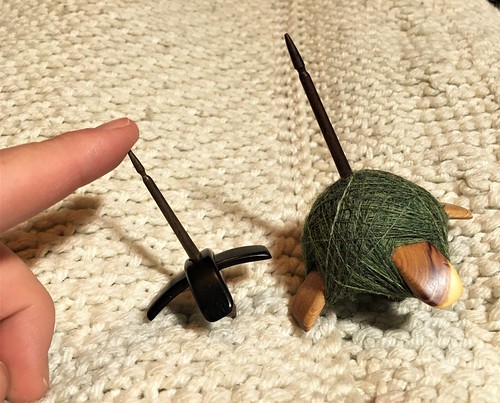
Then the plying was done. I should have stopped there and gone to bed, since it was now very, very late and I had to go to work the next day, but I couldn't. I had to know how much yardage I had.
I transferred the yarn to my skein winder and counted the wraps. That all took another 45 minutes. But finally, I knew how much I spun!
Ta Daaa! This is 4.84 grams of merino 2-ply yarn, measuring 183 yards. Spun on the Bee, plied on the Kuchulu.
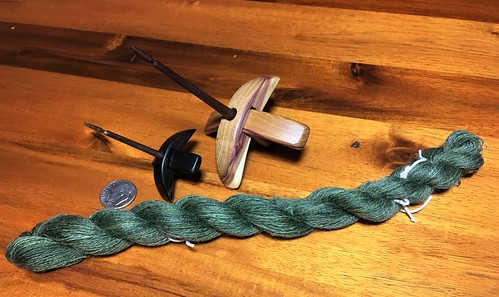
This is the finest yarn I have ever spun. I'm so proud of myself. I love this tiny spindle.
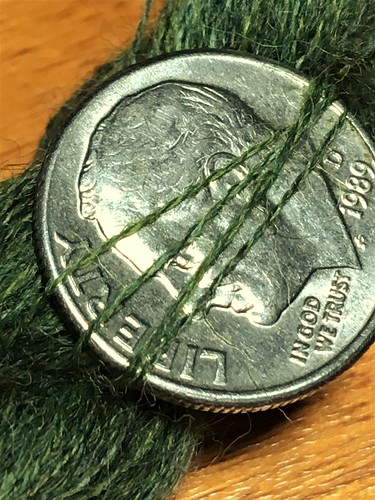
To end this long post, here's (almost) my whole spindle flock. One is missing because I can't find it. It's in a project bag upstairs somewhere, but I couldn't immediately put my hands on it tonight.
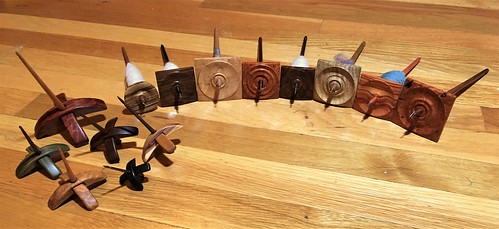
Back to front for the Turkish spindles, then left to right, these are:
27g (0.95 oz) Jenkins Yarn Tools, Turkish Delight, beeswing narra arms, maple shaft (2012)
11 g (0.38 oz) Jenkins Yarn Tools, Kuchulu, verawood arms, walnut shaft (2011)
12g (0.42 oz) Jenkins Yarn Tools, Kuchulu, snakewood arms and shaft (2013)
8g (0.28 oz) Jenkins Yarn Tools, Kuchulu, olivewood arms, maple shaft (2012)
3g (0.10 oz) Jenkins Yarn Tools, Bee Hummingbird, ebony arms and walnut shaft (2017)
10g (0.35 oz) Jenkins Yarn Tools, Kuchulu, lilac arms, walnut shaft (2017)
8 g (0.28 oz) Cascade Spindle Co., Tiger, zebrawood whorl, mahogany shaft (2008)
21g (0.75 oz) Spindlewood Co., Square Mini, cocobolo whorl, ebony shaft (2009)
20g (0.70 oz) Spindlewood Co. Square Standard, birdseye maple whorl and shaft (2011)
23g (0.81 oz) Spindlewood Co., Square Mini, amboyna burl whorl, cocobolo shaft (2015)
20g (0.70 oz) Spindlewood Co., Square Mini, thuja burl whorl, flamewood shaft (2013)
23g (0.75 oz) Spindlewood Co., Square Midi, myrtlewood whorl and shaft (2016)
21g (0.75 oz) Spindlewood Co., Square Mini, tulipwood whorl and shaft (2016)
25.5g (0.90 oz) Spindlewood Co., Square Midi, amboyna burl whorl, mahogany shaft (2017)
not pictured is:
15g (0.53 oz) Spindlewood Co. Square Mini Featherweight, flamewood whorl and shaft (2012)
That's a lot of spindles. However, I use them all and investing in art and the artists who make it is never a bad idea.

